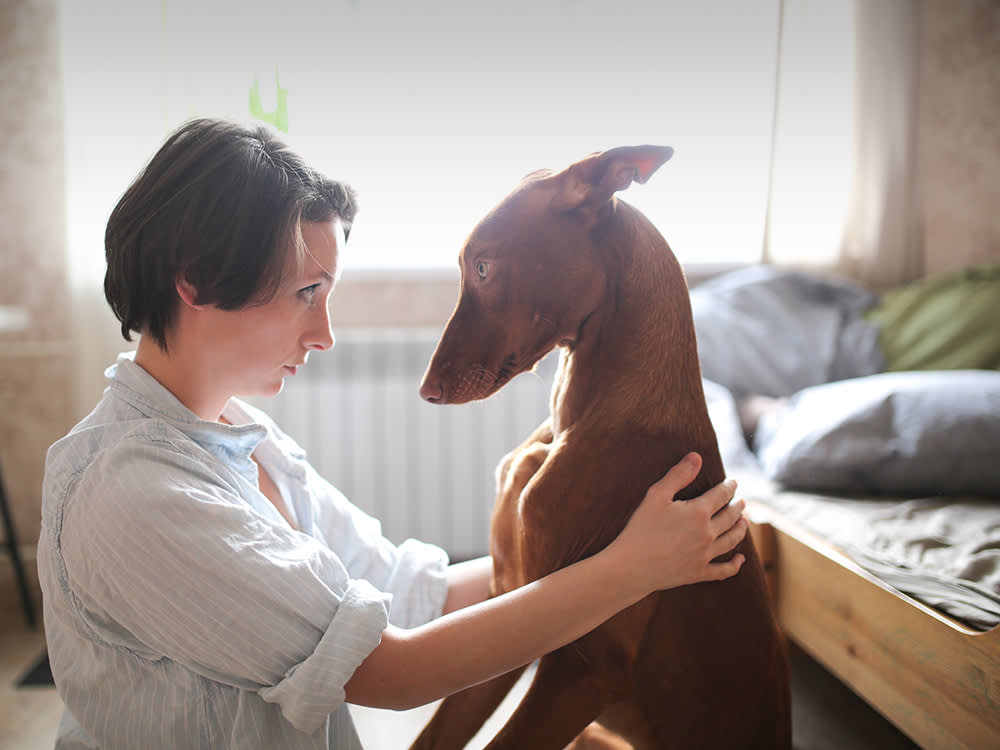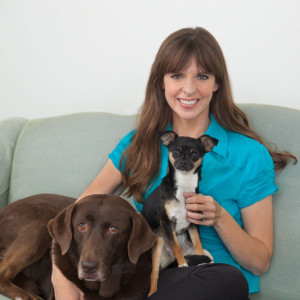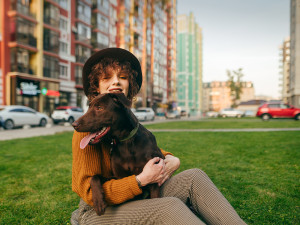“How Can I Tame a Sassy Pup?”
Internationally renowned dog trainer Victoria Stilwell's tips for training pushy puppies.

share article

Your pet wants you to read our newsletter. (Then give them a treat.)
My six-month-old whippet mix is driving me crazy. He has turned from a sweet, quiet pup into a hellion. He now barks at me — probably for attention — and at other dogs (especially at the dog park), and he even nips me during play. Is he trying to dominate me?
Pushy puppies, or dogs who display behavior such as nipping at people or barking at other dogs, are often thought to be displaying dominance, a frequently misunderstood conceptopens in a new tab. While dominance does exist in a dog’s world, it is not as prevalent as people have been led to believe. Dogs who have not been taught manners or how to play appropriately will often adopt their own behavioral “style” to get attention, and this style is frequently rude and pushy.
How to deal with a sassy dog
At six months of age, your puppy has entered adolescence, a phase where boundaries are tested and the “crazy” brain takes over. Rather than responding confrontationally, as is easy to do when you don’t understand a behavior, find ways to help your dog make good choices instead of bad ones. At this stage, his puppy brain is like a sponge, absorbing situations and experiences. This makes it the perfect time for positive learning to take place.
Start training classes
One of the best ways to teach your pup how to greet and play is by taking him to a puppy socialization and manners class. Manners training will help you understand and communicate with your pup, while socialization with other dogs will teach him how to play appropriately.
Build a reliable recall
A good class will show you how to teach your puppy a reliable recall, which gives you the opportunity to redirect negative behavior onto a toyopens in a new tab or treatopens in a new tab. This tells him that leaving play and coming to you are good things. If he ignores you, quietly remove him from the room for a time out until he is calm enough to return to playtime. If he resumes his pushy behavior once he is back in the room, repeat the sequence until he learns that making the right choice means he gets to stay where the fun is.
Use the right rewards
The same method can be used to curb his nipping behavior. If he nips during play with you, either get up and leave the room for a minute or two or have someone else hold his leash while you play, and remove him from the room if he nips you. Play and your attention are rewards for keeping his mouth to himself.
Watch for body language
While some dogs thrive on being at the dog parkopens in a new tab, others find it overwhelming. Observe your pup’s body language to see if he is barking at other dogs because he is overexcited and wants their attention, or because he wants them to stay away from him. Stop taking your dog to the dog park until you understand and address this behavior in class. Practice makes perfect, and rehearsal of negative behavior makes that behavior harder to change.
Choosing the right dog trainer
Choose a puppy classopens in a new tab that utilizes positive-reinforcement methods only. Dogs who are trained this way are not only more tolerant and self-controlled, but they also behave more predictably.
Positive training techniques center on working the dog’s brain in a non-confrontational way, rewarding positive behavior, establishing rituals and predictability, training incompatible behaviors that negate the bad behavior, and lessening a dog’s anger and frustration. Because behavior is influenced without force, the dog’s trust in his person is not violated the way it can be when harsher methods are used (which they unfortunately still are by trainers who espouse outdated dominance and pack-leader theory).
Positive, however, does not mean permissive, and discipline in the form of vocal interrupters, time outs, or ignoring bad behavior is used to guide the dog into making the right choices rather than suppressing negative behavior through fear or force.

Victoria Stilwell, CCPDT
Victoria Stilwell is a world-renowned dog trainer, certified by the Animal Behavior and Training Associates Inc. and star of It’s Me or the Dog. A bestselling author, TV personality, and founder of both the Victoria Stilwell Academyopens in a new tab and Positivelyopens in a new tab (where she is editor-in-chef), Stilwell frequently appears in the media as a pet expert and is widely recognized and respected as a leader in the field of animal behavior.
She also serves on the Advisory Boards for DogTVopens in a new tab, Dognition, The Grey Muzzle Organizationopens in a new tab, RedRoveropens in a new tab, W-Underdogsopens in a new tab and Canine Assistantsopens in a new tab, and she is a member of the U.S. Association of Pet Dog Trainers (APDT) and the International Association of Animal Behavior Consultants (IAABC).
Related articles
![Smiling woman sits on the lawn with her dog in the city]() opens in a new tab
opens in a new tabPlease, Oh Please, Stop Perpetuating the Dominance Dog Theory
The idea of being a dog’s “alpha” is a popular one — but it’s not an effective way to train.
![Small dog humps its teddy bear toy on the room floor]() opens in a new tab
opens in a new tabHumping. Why, Though?!
No less than 7 animal behaviorists weigh in on what’s behind all of this bumping and grinding.

